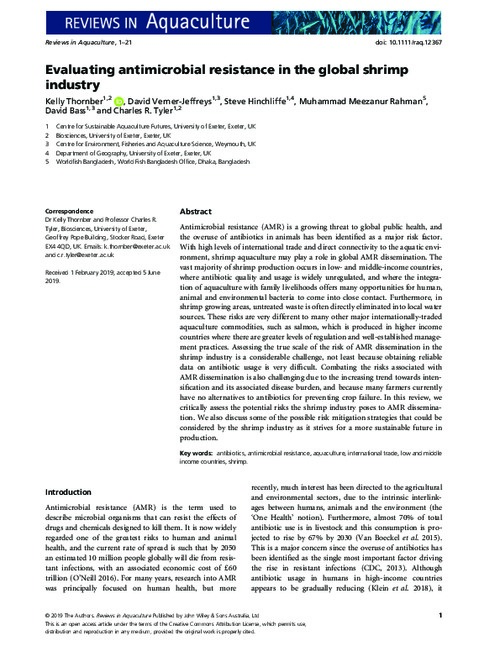Evaluating antimicrobial resistance in the global shrimp industry

Antimicrobial resistance (AMR) is a growing threat to global public health, and the overuse of antibiotics in animals has been identified as a major risk factor. With high levels of international trade and direct connectivity to the aquatic environment, shrimp aquaculture may play a role in global AMR dissemination. The vast majority of shrimp production occurs in low- and middle-income countries, where antibiotic quality and usage is widely unregulated, and where the integration of aquaculture with family livelihoods offers many opportunities for human, animal and environmental bacteria to come into close contact. Furthermore, in shrimp growing areas, untreated waste is often directly eliminated into local water sources. These risks are very different to many other major internationally-traded aquaculture commodities, such as salmon, which is produced in higher income countries where there are greater levels of regulation and well-established management practices. Assessing the true scale of the risk of AMR dissemination in the shrimp industry is a considerable challenge, not least because obtaining reliable data on antibiotic usage is very difficult. Combating the risks associated with AMR dissemination is also challenging due to the increasing trend towards intensification and its associated disease burden, and because many farmers currently have no alternatives to antibiotics for preventing crop failure. In this review, we critically assess the potential risks the shrimp industry poses to AMR dissemination. We also discuss some of the possible risk mitigation strategies that could be considered by the shrimp industry as it strives for a more sustainable future in production.
Permalink
Date Available
Type
Publisher
ISSN
1753-5123
Copyright
CC-BY-4.0
Research Themes
Language